Fish Tank Size Selector
Looking for the perfect fit? Check Out These Best-Selling Fish Tank.
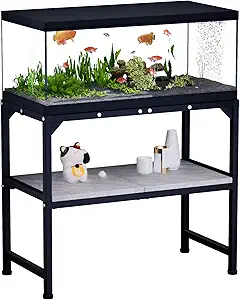

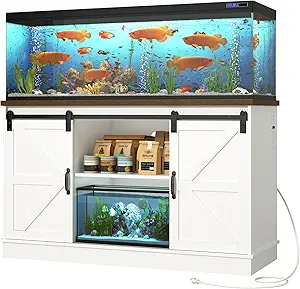
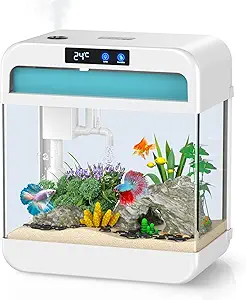
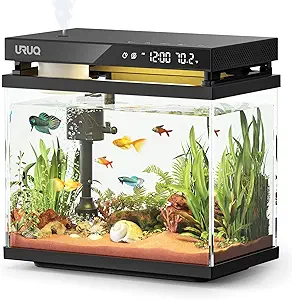
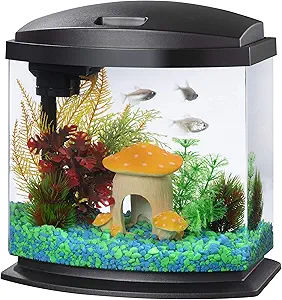
The Ultimate Fish Tank Size Chart – A Comprehensive Guide to Choosing the Right Aquarium Size
When it comes to setting up a fish tank, selecting the right size is essential for creating a healthy, balanced environment for your aquatic pets. Whether you’re new to fishkeeping or an experienced aquarium hobbyist, knowing the appropriate fish tank size for your needs is vital for both the well-being of your fish and the overall success of your aquarium setup.
We’ll explore various fish tank sizes, the factors that influence your choice, and provide an in-depth fish tank size chart to help you select the best aquarium for your fish species. We’ll also discuss considerations such as tank shape, filtration, water volume, and maintenance to ensure a thriving aquatic environment.
Why Choosing the Right Fish Tank Size Matters
Selecting the right fish tank size is not just about aesthetics it’s crucial for the health and happiness of your fish. A fish tank that is too small can stress your fish, leading to potential health problems, while a tank that is too large may make it harder to maintain the right water conditions. Here are some of the key reasons why tank size matters:
- Room for Fish to Swim: A larger tank gives your fish more space to move around, reducing stress and allowing them to exhibit more natural behaviors.
- Water Stability: Larger tanks are more stable in terms of water quality. Smaller tanks can experience rapid fluctuations in temperature, pH, and ammonia levels, which can be harmful to your fish.
- Filter Efficiency: A larger tank offers more room for filtration systems, which helps maintain clean water by removing harmful toxins and waste.
- Species Requirements: Different fish species have different space requirements. Some species, like goldfish and cichlids, need more room to grow and thrive. Ensuring the correct tank size will help them live long and healthy lives.
Fish Tank Size Considerations
When choosing a fish tank size, there are several factors to keep in mind:
1. The Number of Fish
The more fish you have, the larger the tank you will need. Overcrowding can lead to poor water quality, increased stress for the fish, and a higher risk of disease. As a general rule, provide at least 1 inch of fish per gallon of water, but keep in mind that larger fish will require more space.
2. Fish Species
Different fish species have different space requirements. For example, goldfish need significantly more room than betta fish due to their size and active nature. It’s important to research the specific needs of your chosen species before deciding on the tank size.
3. Aquascaping and Decorations
If you plan to add decorations such as rocks, plants, and substrates to your tank, you’ll need to account for the space these will take up. Decorations not only contribute to the aesthetic of your aquarium but also provide hiding spots for shy fish and contribute to a healthier tank environment.
4. Filtration
The size of your tank will also impact your filtration system. Larger tanks require stronger filters to maintain water quality, so be sure to choose a filter that is appropriate for the size of your aquarium.
5. Maintenance
While larger tanks are easier to maintain in terms of water stability, they can also require more time and effort for cleaning and maintenance. Make sure you’re prepared to clean and monitor your tank regularly, especially for larger setups.
Fish Tank Size Chart
Below is a detailed fish tank size chart that provides guidelines for different types of fish tanks. The chart includes the most common tank sizes for various species, as well as the number of fish that can be comfortably kept in each tank size.
| Tank Size (Gallons) | Dimensions (L x W x H) | Recommended Species | Fish Capacity | Common Uses |
|---|---|---|---|---|
| 5 Gallons | 16″ x 8″ x 10″ | Betta Fish, Shrimp, Small Tropical Fish | 1 Betta or up to 5 small fish | Nano tanks, small spaces, offices, dorm rooms |
| 10 Gallons | 20″ x 10″ x 12″ | Betta Fish, Tetras, Guppies, Shrimp | 5-6 small fish | Starter tanks, beginner aquariums |
| 20 Gallons | 24″ x 12″ x 16″ | Guppies, Goldfish, Mollies, Platies | 8-10 small fish | Small to medium-sized tanks, aquascaping |
| 30 Gallons | 36″ x 12″ x 18″ | Neon Tetras, Gouramis, Corydoras | 15-20 small fish | Standard community tanks |
| 40 Gallons | 36″ x 18″ x 16″ | Cichlids, Gouramis, Angelfish | 20-25 small fish | Larger tropical setups, breeding tanks |
| 55 Gallons | 48″ x 13″ x 21″ | Cichlids, Angelfish, Goldfish | 25-30 small fish | Larger community tanks, aquascaping |
| 75 Gallons | 48″ x 18″ x 21″ | Larger Cichlids, Goldfish, Discus | 35-40 small fish | Large fish setups, show tanks |
| 90 Gallons | 48″ x 18″ x 24″ | Angelfish, Oscars, Large Cichlids | 40-45 small fish | Larger aquariums, aquatic plant setups |
| 120 Gallons | 48″ x 24″ x 24″ | Large Cichlids, Oscars, Arowanas | 50-60 small fish | Large community tanks, more room for fish |
| 150 Gallons | 60″ x 24″ x 24″ | Saltwater Fish, Large Cichlids | 60-75 small fish | Large saltwater or freshwater tanks |
| 200 Gallons | 72″ x 24″ x 24″ | Large Saltwater Fish, Sharks | 75+ fish | Show tanks, custom setups, large display tanks |
How to Choose the Right Tank Size
1. Assess the Space Available
Before purchasing a tank, consider the space where you plan to keep it. Make sure the area can accommodate the tank’s dimensions without crowding the room. Large tanks can be heavy and require sturdy furniture, so choose a proper stand or table.
2. Know Your Fish’s Growth Potential
Research the adult size of the fish you plan to keep. Some fish, like goldfish and cichlids, grow much larger than you might expect, requiring a much bigger tank than their juvenile size suggests.
3. Plan for Future Growth
While it’s tempting to purchase a small tank for beginners, it’s often better to start with a slightly larger tank. This gives your fish room to grow and reduces the frequency of tank upgrades. Additionally, a larger tank allows for more fish, which can help create a better balance in the ecosystem.
4. Consider Filtration and Equipment
When choosing a tank size, remember that the larger the tank, the more powerful your filtration system will need to be. Ensure your tank and filtration equipment are well-matched to avoid poor water quality.
5. Think About Maintenance
Larger tanks tend to have more stable water parameters, but they also require more maintenance, including more frequent water changes. Consider how much time you’re willing to dedicate to tank upkeep before deciding on a size.
Common Fish Tank Shapes
Fish tanks come in a variety of shapes, and the shape you choose can impact both the aesthetic and the functionality of your aquarium.
1. Rectangular Tanks
The most common and practical shape, rectangular tanks provide ample space for fish to swim and are easier to maintain than other shapes. They offer a lot of room for aquascaping and are available in a variety of sizes.
2. Cube Tanks
Cube tanks are compact and ideal for small spaces, but they can be more challenging to maintain due to their small water volume. They are best suited for small fish or shrimp.
3. Bow Front Tanks
Bow front tanks have a curved glass front, which provides a unique viewing experience. They are commonly used for smaller to medium-sized fish and can enhance the appearance of your room due to their sleek design.
4. Hexagonal Tanks
Hexagonal tanks are visually appealing and can fit into corners or smaller spaces. However, their shape can make aquascaping a bit more challenging compared to traditional rectangular tanks.
Conclusion
Choosing the right fish tank size is an essential step in creating a healthy, beautiful aquarium that both you and your fish will enjoy. By understanding the space requirements of different fish species, considering factors like filtration, and utilizing the fish tank size chart provided in this guide, you’ll be well on your way to setting up a thriving aquatic ecosystem.
Whether you’re starting with a small 10-gallon tank or investing in a 150-gallon tank for a large saltwater display, remember that the size of your aquarium plays a significant role in the health of your fish and the long-term success of your aquarium hobby.
Happy fishkeeping!






